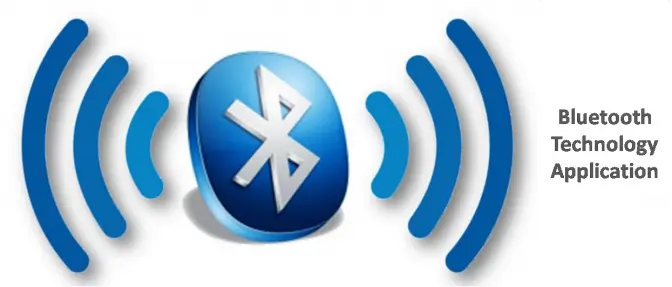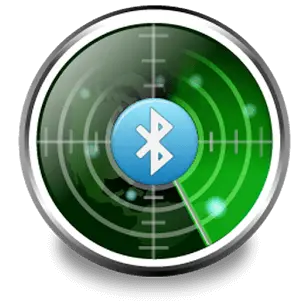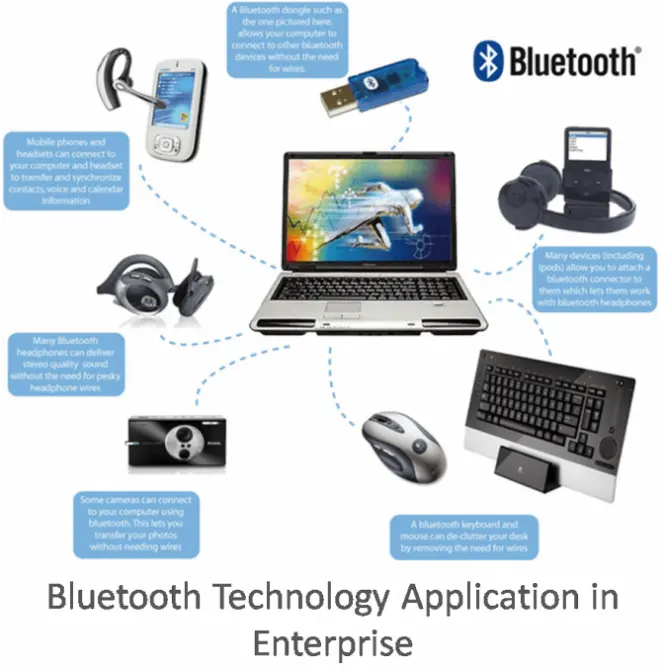Bluetooth Technology Applications – The development of Bluetooth technology is growing rapidly. Around the world, especially in the major of technological fields, we can see more research and development programs regarding to the Bluetooth. As a result, there are many new inventories that is related to Bluetooth Technology Applications, no matter it is a new technology, or just an update.
Just take a look at the growing version of Bluetooth as an example. Few years ago we have BT Classic, and not we arrived to Bluetooth 5 or Low energy that can maintain stable connection with efficient use of energy. Or, you can see the variety of Bluetooth Technology Applications right now. All of them prove that Bluetooth is a growing technology with various type of usage.
However, there is dilemma in the middle of Bluetooth technology applications popularity. The fact that vast majority of people has used, or at least has tried to this technology, is not strengthened by their technical understanding about it. Mostly, user understanding to Bluetooth or wireless technology in general is still relatively low. In other words, people just act as they only a user. They don’t have any intention to understand it in from the deeper point of view.
As a result, it is easy for companies or technological business owner to play in this gap. They keep reinventing new technology with minimum upgrade, and sell it to customer. With the good marketing strategy, people will easily attracted and keep buying the product over and over without realizing that they product they’re buying barely has significant update.
This good marketing strategy will corrupt the mind of consumers to keep buying new product over and over. Well, this thing needs to stop. Of course it is not good in the consumer for repurchasing a pricey product with no significant change. It’s not good for their budget, and it’s not good for the environment as well. Because buying more products in the consumer side, or producing more products in the manufacturer side, means that we add more electrical waste. Without good waste management, it will only harm the environment we’re living in.
One of the ways to stop this un-wise purchase behavior is by learning. Learn about the basic information of Bluetooth technology and its applications, so we will have more consideration in purchasing new products. As the beginning of this learning process, here is some Bluetooth basic information, and a bit of Bluetooth technology applications examples in our daily life.
Bluetooth Technology Knowledge Base:

1. What is the Bluetooth? :
Bluetooth is a wireless technology standard for exchanging data over short distances (using short-wavelength UHF radio waves in the ISM band from 2.4 to 2.485 GHz) from fixed and mobile devices, and building personal area networks (PANs).
2. Who invented Bluetooth?
In 1994 a group of engineers at Ericsson, a Swedish company, invented a wireless communication technology, later called Bluetooth. In 1998, the original group of Promoter companies—Ericsson, Intel, Nokia, Toshiba and IBM—came together to form the Bluetooth Special Interest Group (SIG).
3. What is Bluetooth frequency and How Does It Work?
Wi-Fi and Bluetooth both occupy a section of the 2.4 GHz ISM band that is 83 MHz-wide. Bluetooth uses Frequency Hopping Spread Spectrum (FHSS) and is allowed to hop between 79 different 1 MHz-wide channels in this band.
4. How long has the Bluetooth been around?
Since its creation 20 years ago Bluetooth has seen a number of improvements. Over the years the speed of connection and discovery of Bluetooth devices has been increased, the data transfer rate has got faster and support for low energy use (known as Bluetooth Smart / Bluetooth low energy or BLE) has been added.
Bluetooth Technology Applications

It will really be a long discussion when we talk about Bluetooth technology applications. So, here we explained several examples about it. But, before jumping to that topic, below is the basic information about Bluetooth.
As stated above, early invention of Bluetooth technology was in 1994. One of the popular telecom vendors at that time, Ericsson, invented wireless technology to do data exchange.
This technology exchange is done over the short range of distance over UHF radio waves. This is why many Bluetooth technology applications are limited to the technology that requires short range of data transmission. In addition, to work as it is already planned, this radio wave operates in the 2.4 to 2.485 GHz of ISM band.
And now, after several decades have passed, Bluetooth technology is managed by a group called Bluetooth Special Interest Group. With more than 25.000 members from many areas such as computing, networking, telecommunication, and others, the group has standardized Bluetooth technology as IEEE 802.15.1. This is the standard that used by Bluetooth technology until now.
Bluetooth Technology Applications and Fundamentals
Fundamentally, Bluetooth technology is built as standalone protocol that includes many required layers which are required in its application. This technology is based on the FHSS modulation which is able to create 1600 hops in a single second.
You might often see the 1 Mbps rate symbol in a Bluetooth device. This rate symbol means that the Bluetooth device is able to translate 700 Kbps actual data transfer. However, in the new technology, the transfer rate could be more than that.
With above principles, it can creates so many kinds of Bluetooth Technology Applications, especially with the high applicability of it. Nowadays, you can find many application of it in several aspects from your personal gadget such as smartphone, PC, Audio/Video Player, Tablet, wireless headset, to some unimaginable application such as TV, refrigerator, or even in your simple electronic devices like power bank, they might already equipped with Bluetooth function.
Performance of Bluetooth Technologies and Their Applications to Location Sensing

The interesting part of Bluetooth technology is the performance of it. It always increases from time to time, and from version to version. Every year, there must be any progress or new invention of the use of Bluetooth technology.
Talking about version, the BT technology has reached the BT V 5.0 [by the time that this article is published] which promises heftier, faster, and more secure connection.
This version of BT also called the Bluetooth smart or Bluetooth Low Energy, and believed to be the basis of Internet of Things (IOT) concept. Due to this typical performance, Bluetooth technology can also be applied in many type of sensors. Bluetooth can be applied on water meter sensor, temperature sensor, pollution sensor, and many more. Besides, now it can also be applied on location sensing. Among other Bluetooth technology applications, this one is interesting.
You can really use your Bluetooth to track something indoor. This is due to the fact that GPS signal is difficult to work inside the building. So, Bluetooth comes as an alternative.
By utilizing one Bluetooth beacons and one Bluetooth device, you can have your indoor tracking system. The beacon is really interesting. Beside the fact that this is much cheaper, this device is also able to send signals out effectively but without the ability to receive the signals.
So, all you need to do is attaching the beacon to something you want to track, and then track it with your Bluetooth tracking device.
Applications of Bluetooth Technology in an Enterprise

One of the Bluetooth technology applications is in the field of enterprise. What can be done by Bluetooth technology to support the enterprise? Well, there is a lot of example of bluetooth applications in the enterprise. In the enterprise, everything is directed to boost the productivity, and Bluetooth can be a media to accommodate it.
By connecting devices such as computer, keyboard, mouse, printer, projector, fax, and other typical enterprise office equipment, the job will be really helped.
Employees don’t even have to deal with the wired connection anymore.The devices they use will be simple to set, has tidier look, easy to operate, and time saving. As a result, we can see the employee productiveness increase whether directly or indirectly.
Compliance of Bluetooth Technology
Bluetooth is a kind of wireless technology that works using 2.4 GHz radio frequency as a medium. Just like other wireless technologies, the use of Bluetooth can not be said as totally “free”. Even though we don’t have to pay for frequency license because in most parts of the world radio frequency operating in 2.4 GHz is free, but the devices using Bluetooth technology must be standardized. This is to make sure that the frequency emitted by the product doesn’t harm the user, and not causing any interference’s.
Some aspects that are usually considered during Bluetooth compliance process are frequency range, transmit power, and spurious emission. For the case of Indonesia, allowed frequency range for Bluetooth is 2400 – 2483.5 MHz with maximum Transmit power 100 mW. These aspects will be checked when we’re processing SDPPI certificate, which is the compliance certification for wireless product in Indonesia. So, before distributing your Bluetooth product to Indonesia, please make sure that it has complied with SDPPI requirements, which can be proven by obtaining SDPPI certificate.
Because based on Communication Ministry Regulation Number 16 of 2018, “Every Telecommunication Tool and/or Equipment that is manufactured, assembled, or imported, for trade and/or use in the territory of the Unitary State of the Republic of Indonesia must meet the Technical Requirements [Article 2 Point number 1]”. And “The fulfillment of the Technical Requirements on Telecommunication Tools and/or Equipment as referred to in Article 2 paragraph (1) is proven by a Certificate through the Certification process [article 4].”
Conclusion
With the high functionality and various kinds of Bluetooth technology application, this kind of wireless seems to be the promising future technology.
We never know, but the development of it must be surprising in every way possible. So, in order to we just need to be ready and selective to choose which Bluetooth technology that will fit to us and which will not.
Overall, even if Bluetooth has several weakness points such as short range of operation and slower rate of data transfer, this technology is still worth to be used. At least, it already took part in the development of file transferring system.
That’s all of the information regarding to the Bluetooth technology that we need to share. Hopefully it will be informative, and if you have any other opinions about this, you can put them in the comment session below.
